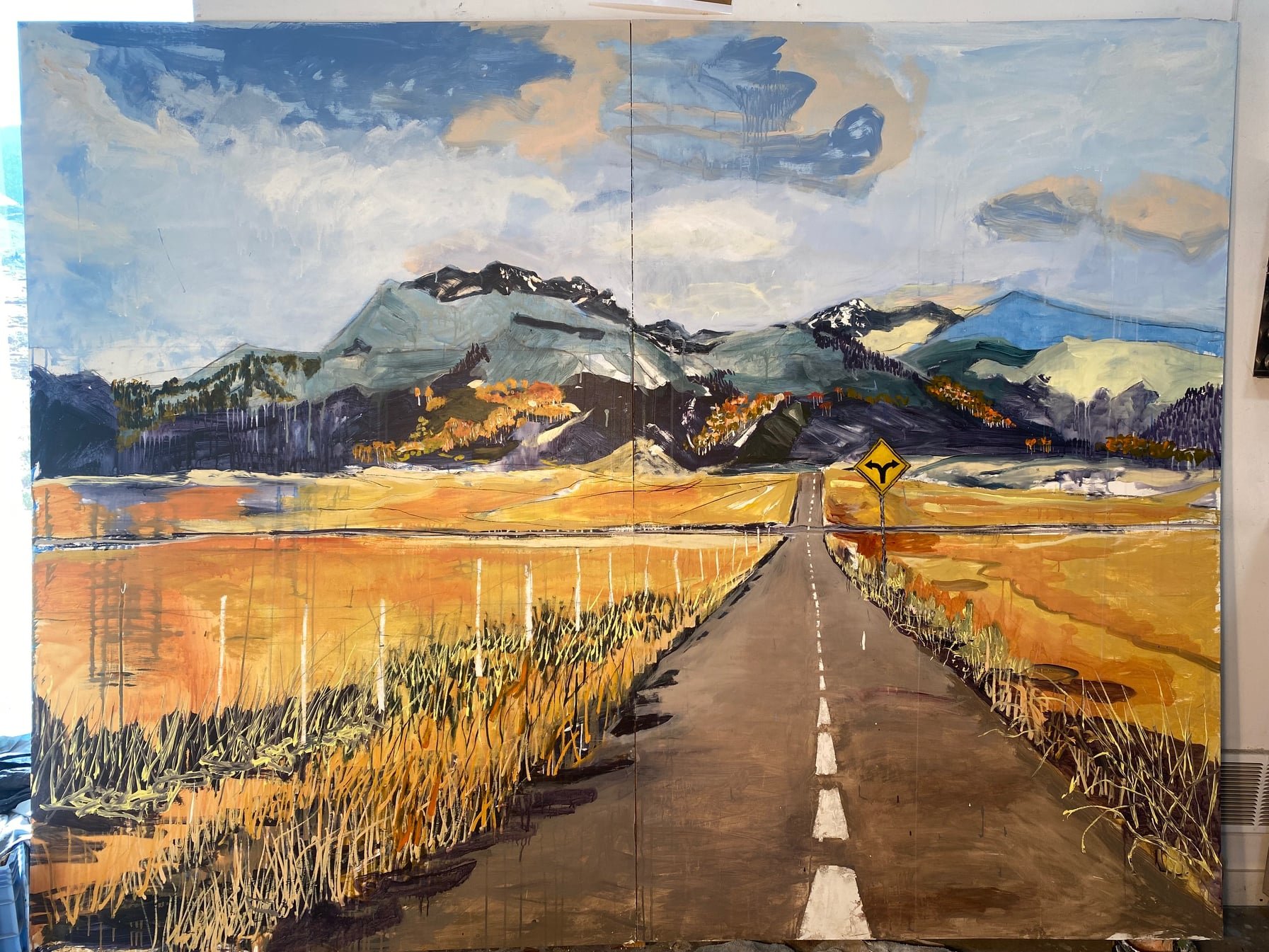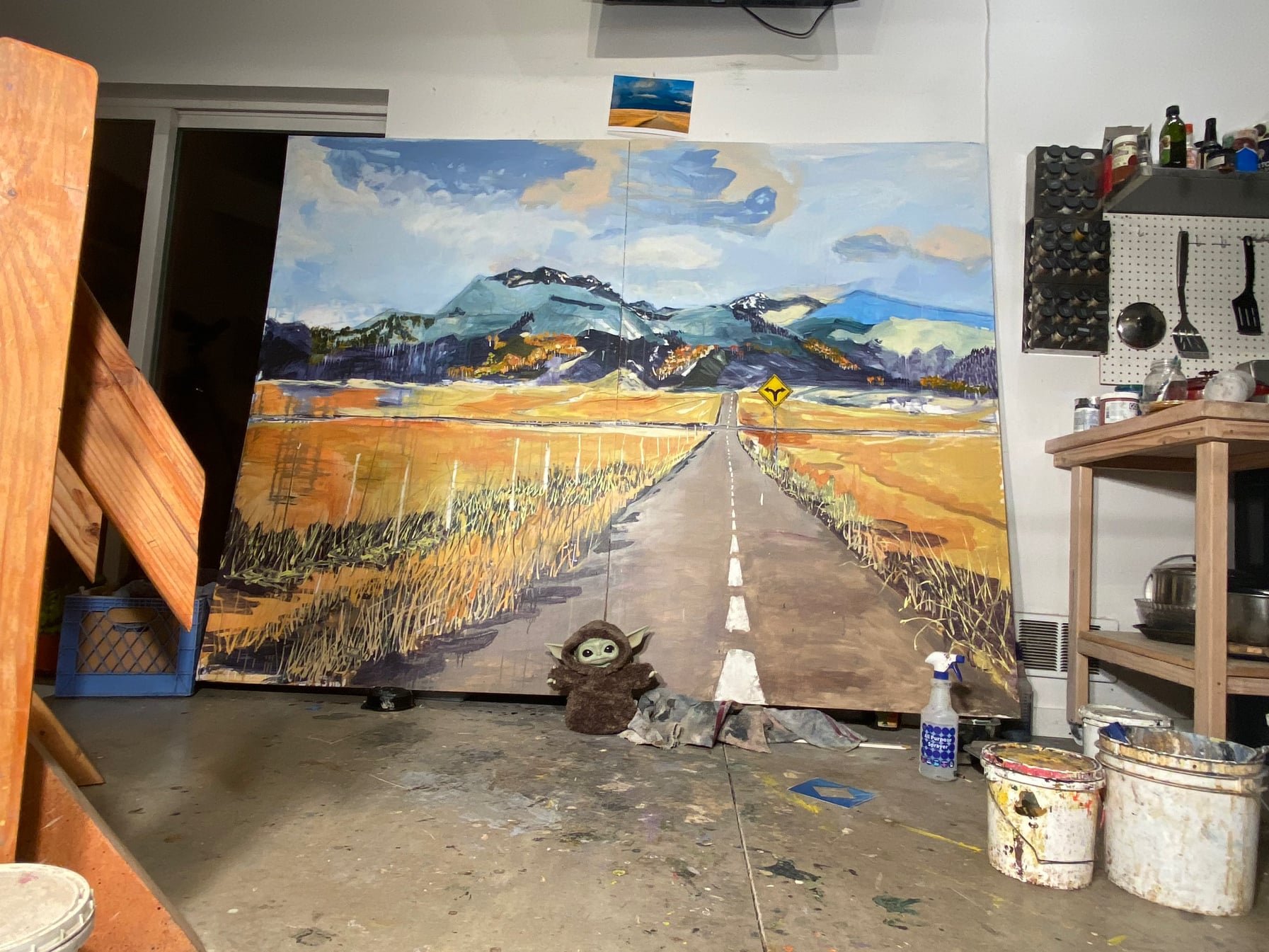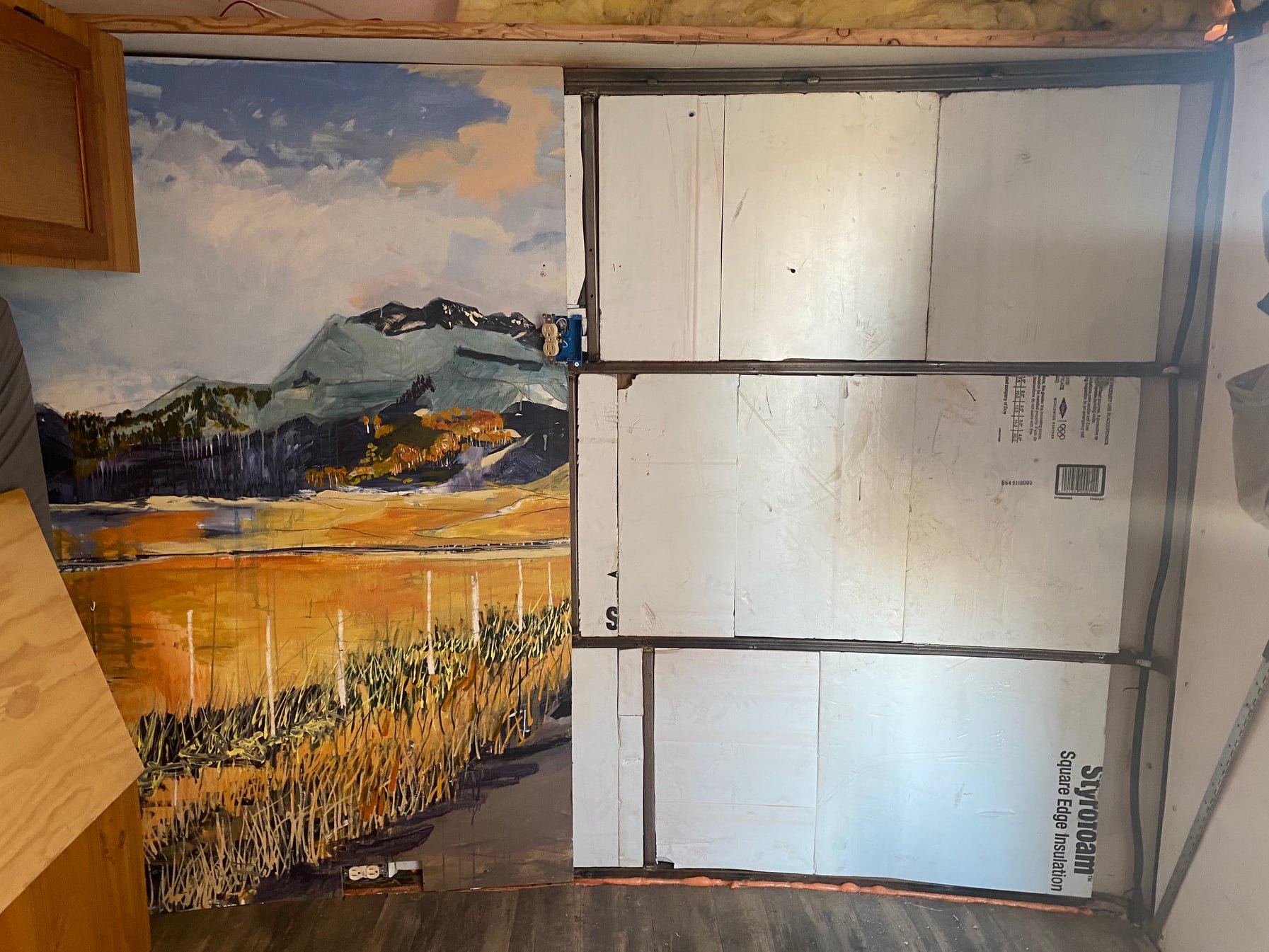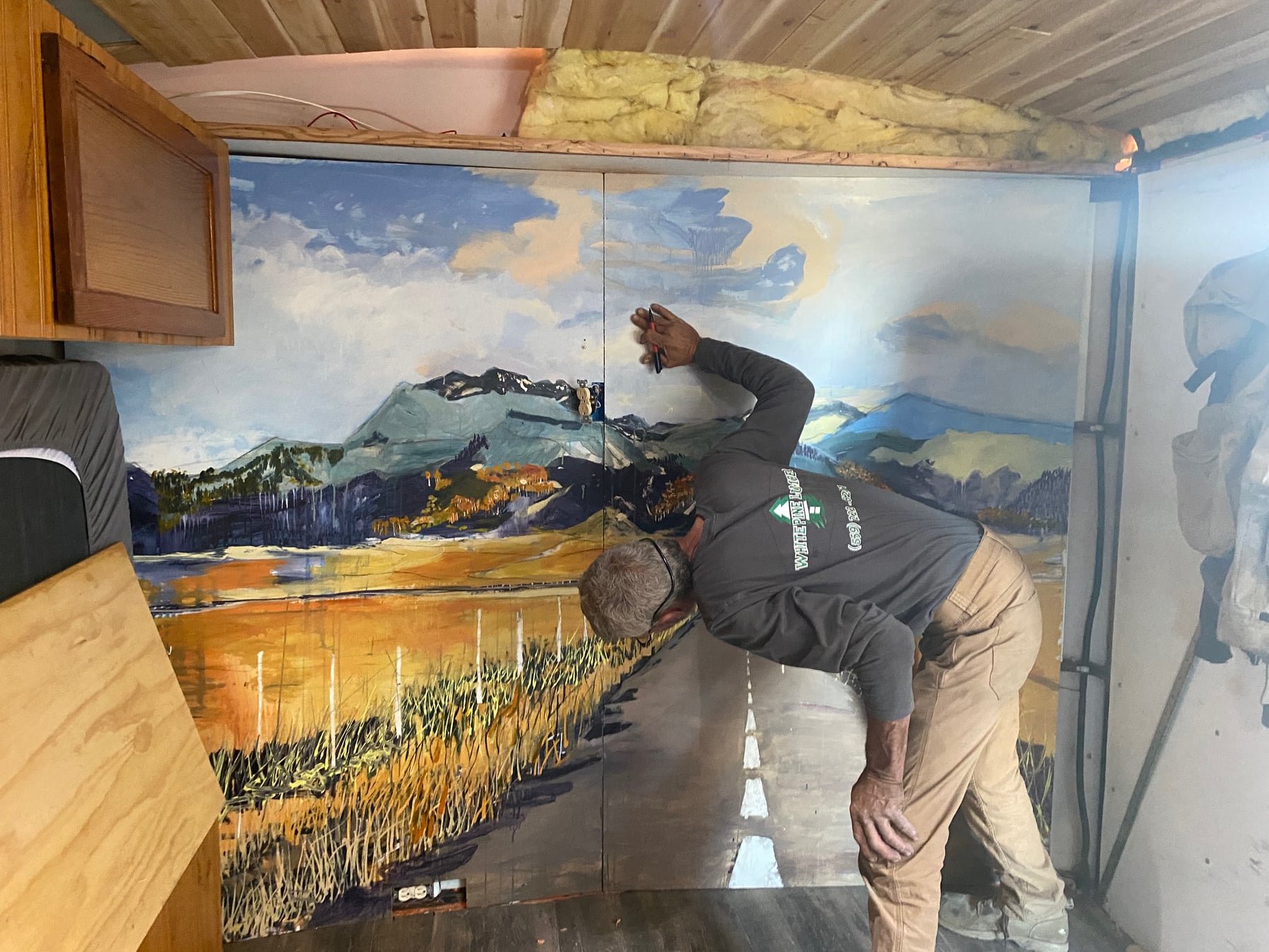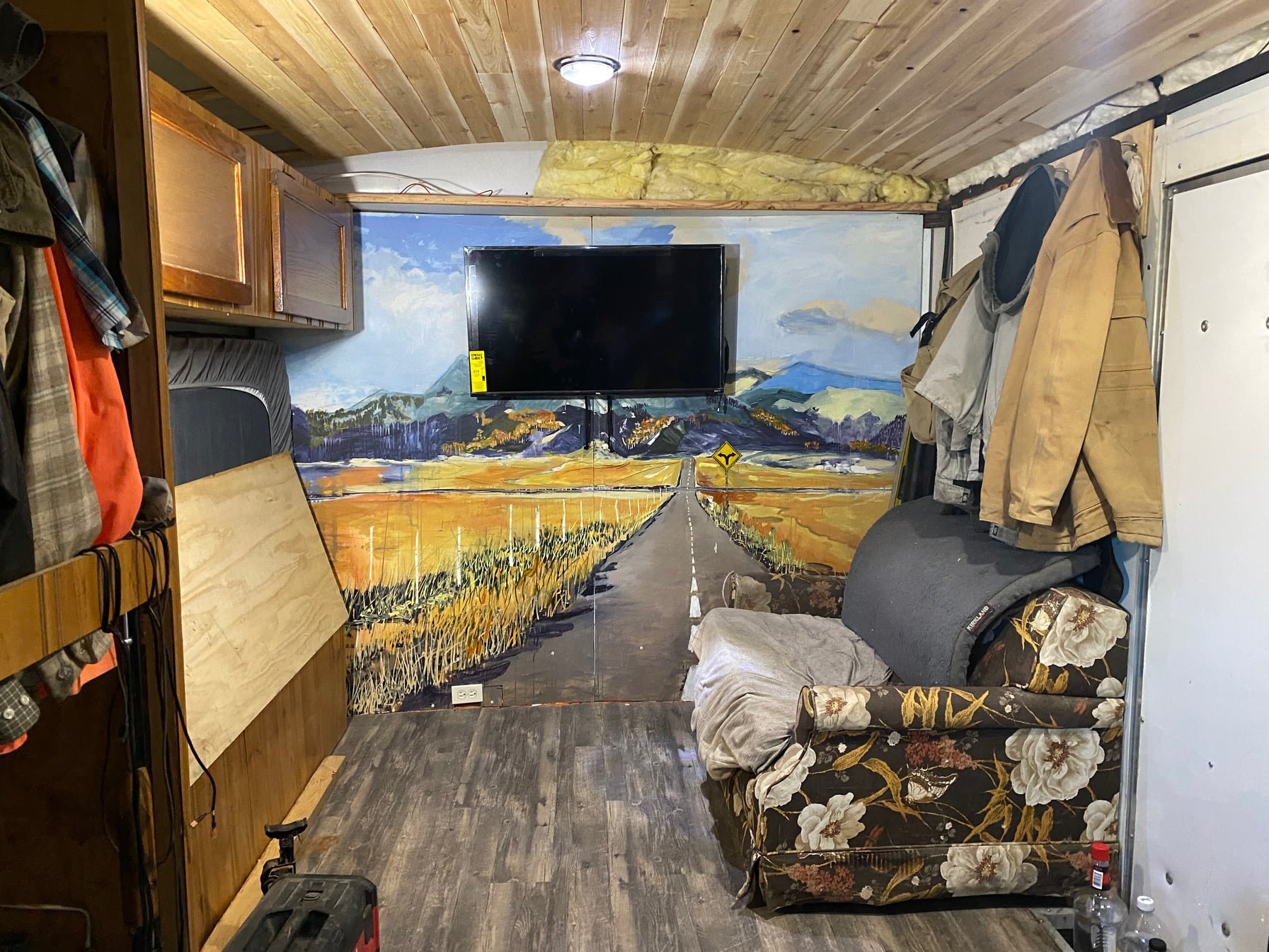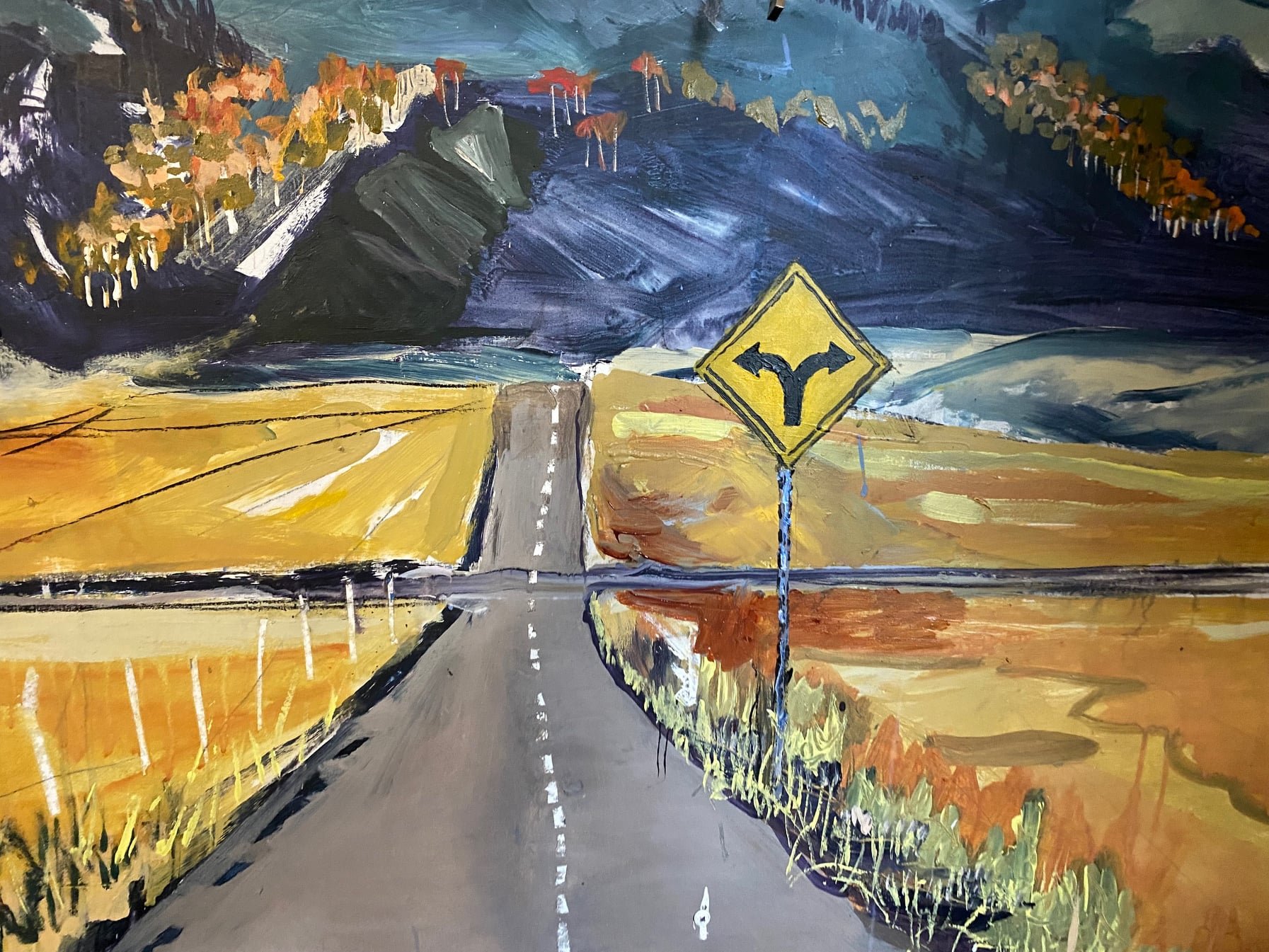
Make Me a Landscape, Do Not Include Any Sky
In late 2023, with the generous help of fellow artist and tech wizard John Brownell, I used a collection of my own paintings to train a custom AI image model specializing exclusively in creating “Ben Bloch” style painting images, generated from text prompts. I would write: “A lush forest, fall colors, green waters, do not include any sky” and get results that were genuinely striking (at least to me!). It was something akin to seeing a clone of myself or hearing someone speak to me in my own voice. It was like me, but not me. This new AI “assistant” could deliver completely original—and in a certain sense, unreal—scenes that mirrored my own signatures: things like high-velocity paint strokes, ghosty charcoal lines, and spots of raw canvas were sprinkled throughout the compositions. Still, these images were somehow lacking. Spatially, they fell flat. They were missing a certain tension—and magic—that the materiality of paint can bring to canvas. But I kept looking at them, and then making more to look at. Whatever their shortcomings, the mix of authenticity and artificiality had an undeniably entrancing, uncanny effect.
What might these images based on a “Ben Bloch” visual language model have to offer to a landscape painter? What would happen if I reversed the feedback loop and re-rendered them in paint on canvas? What could AI—which is, after all, a human creation—have to tell us about our own human designs?
This series of nine paintings is borne of those questions. Artificial intelligence has wrought anxieties in many quarters. More than one person told me that I just shouldn’t tell anyone how I made these paintings; I should just use the tool like a secret muse, and no one would ever know that the places depicted were not actually from the landscape we know. Yet I think we mostly now agree that artificial intelligence is with us to stay—and only just getting started. New and ever more AI-tinged experiences are daily creeping into our lives, from our communications, to self-driving cars, to virtual reality headsets, to social media bots, to voice, video, and song generation, to spam calls, to shopping assistants, and even virtual “soulmates.” It is worth noting that this new-feeling reality is wholly generated from what we have offered to our silicone progeny. The internet learns from every comment, every photo, every sound, every last string of broken-down data we give it. The data’s magnitude is exponential and unfathomable. Its expansiveness feels organic. What we see now is the internet, like an infant, becoming a walking child: absorbing, responding, and amassing at a rate we could not formerly imagine. What AI knows about us comes from our utter devotion to the internet we built. And, I have to believe (albeit with fear) that it could have something to teach us—which is another way to say we might have something to teach ourselves.
In this series, instead of using plein air “reality” or photographs as sources, I decided to take a selection of the text-prompt-produced images from the Ben Bloch AI image modeler and “re-make” them as hand-made paintings. The act of re-rendering these curious images with physical paint—sending them back through my human mind and hand—might, I hoped, result in something interesting.
Of course, in some sense, all landscape paintings are based on prompts. The prompt might be a direct—though ephemeral—experience of nature. The prompt might be a memory. The prompt might be a photograph. Or, the prompt might be language—or a language model. Perhaps no one described this better than the amateur painter Winston Churchill, who once insightfully wrote,
It would be interesting if some real authority investigated carefully the part which memory plays in painting. We look at the object with intent regard, then at the palette, and thirdly at the canvas. The canvas receives a message dispatched usually a few seconds before from the natural object. But it has come through a post office en route. It has been transmitted in code. It has been turned from light into paint. It reaches the canvas a cryptogram. (“Painting as Pastime,” 1948)
Churchill was pointing to how much indirect processing already occurs in all acts of painting—even en plein air. AI, then, is maybe not as far from nature and art as we might imagine (and it’s interesting to note that the word “artificial” comes from the Latin word artificialis, which means "contrived by skill or artistry”). Churchill’s description of the role of memory in painting landscapes could be equally applied to what I’ve tried to do—in a situation he likely didn’t imagine—by running my own AI-modeled cryptograms back through myself, translating them another time again in the attempt to turn them on.
Ultimately, AI's possibilities are probably far too vast for us even to imagine. Eventually, I suspect, we’ll have to face the fact that the consciousness we think belongs exclusively to us as humans—that essence that we leverage every time we create—could actually live on in some other vessel. But for now, these paintings still very much contain my own consciousness, and maybe doubly so. They are a mise-en-abyme of my experiences with nature, art, and the will to create. Hopefully, others will receive them as something both familiar and newly strange, and perhaps something compelling, even artful.
Return to Main Project Page: Make Me a Landscape, Do Not Include Any Sky
Interior Trailer Crossroads Mural
Landscape Mural Inside a Trailer
Last Fall, I did a trade with my friend Harold who leads a traveling nomad lifestyle, moving around the west in a 28" converted utility trailer that he calls home. He's a master builder and helped me with a construction project. In exchange he wanted a mural size painting of a crossroads painted on the interior backend of his trailer. I removed the wall panels from back of his trailer and brought them to my place and created this custom piece (it is 8 ft X 6 ft), then brought it back to him and we re-installed the painted panels. I tried to design the image so that the road picks up where the floor ends, to create an illusion of continuing space, the road stretching out. For better or worse, I knew there would be outlets cut into it and a TV mounted kinda centrally in the image, so I also tried to keep the crossroads and crossroads sign below the TV to always be seeable. The result turned out pretty cool. I like the idea that this "road piece" is often out on the road itself, even stopping sometimes at crossroads...a well known place.
One funny aside. We did not completely agree on the best signage to indicate a crossroads. Harold preferred a standard squarish cross that looks like a big basic plus symbol. I liked the a more curving horn-like symbol tipped with articulated arrows to indicate the junction. In the end he happily let me use my preferred crossroad sign - a "signature" touch, he said - and we both liked the way it turned out (there is a detail of it in these pictures).
